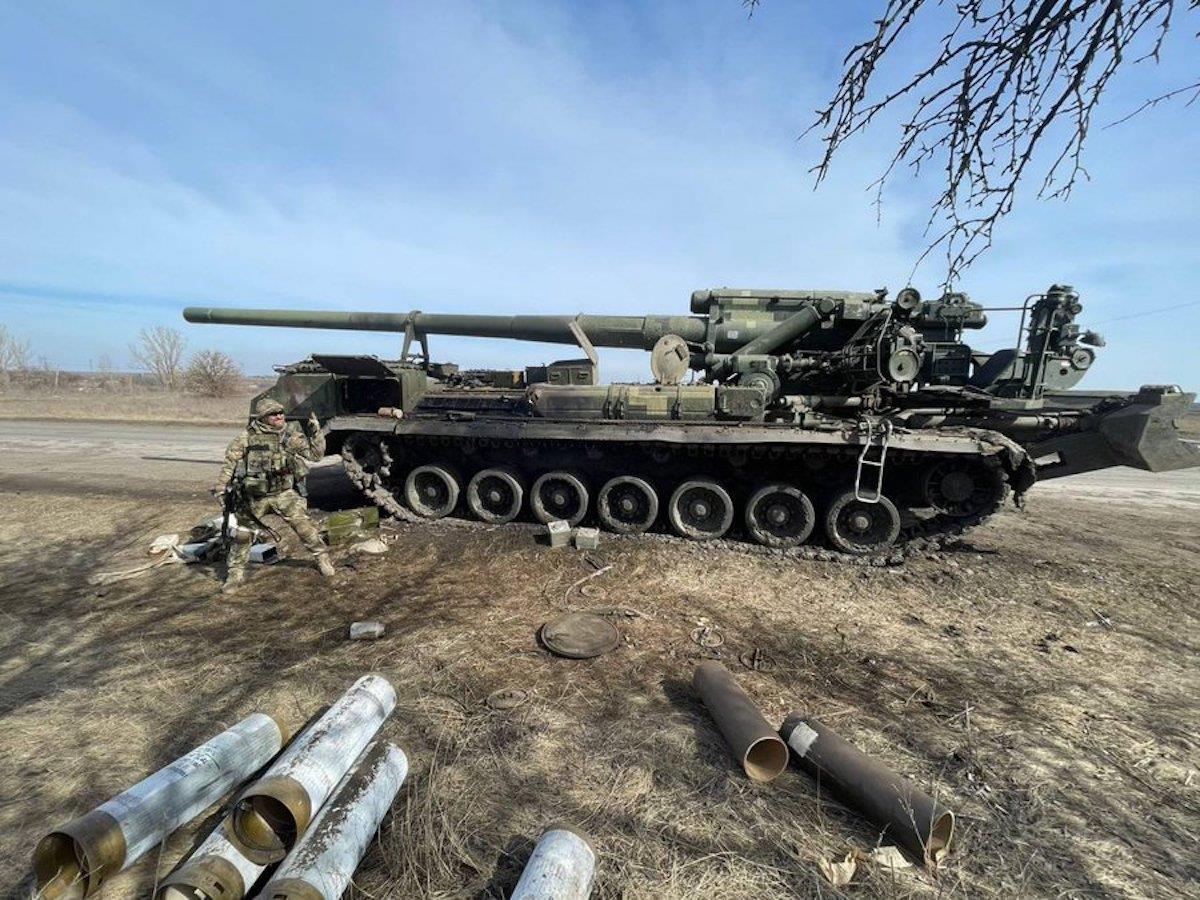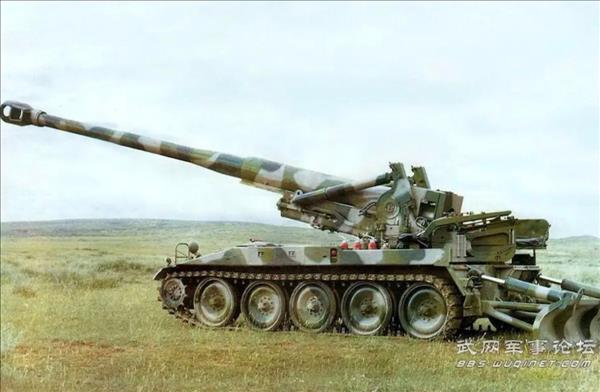
The Super-Heavy Gun China Aims To Point At Taiwan
defense one reported last month that the People's Liberation Army – Strategic Support Force (PLA-SSF) has awarded a contract for the production of 203-millimeter artillery guns, larger than any such weapon in known US or Chinese arsenals.
The report notes that the contract was awarded to the Nanjing University of Science and Technology (NUST), China's leading institution for developing advanced artillery.
The PLA-SSF Northwest Institute of Nuclear Technology (NINT) in Xian has been charged with developing the project, which the Defense One report suggests may be capable of firing tactical nuclear rounds.
The same report notes that China may use 203-millimeter artillery to hit strategic targets far behind enemy lines, blast through enemy defenses, break up enemy advances, demolish urban enemy strongholds, and even as a terror weapon against civilian populations.
The report also says it may fulfill an intermediate role between 155-millimeter artillery and longer-ranged rocket artillery.
At the same time, China's new 203-millimeter guns will face the same limitations as all heavy artillery pieces, including low rate of fire, limited mobility and difficult logistics.
China has previously developed 203-millimeter artillery, but those efforts stalled until recently. global security notes that Cold War border tensions between the Soviet Union and China made it imperative for the latter to develop artillery that could outrange and outgun the most powerful Soviet 203-millimeter artillery pieces.
The source notes that cooperation between China and Western companies working with noted supergun designer Gerald Bull produced the VSP-203/W90 203 self-propelled gun ranging from 37.5 to 50 kilometers depending on the round type, with the gun first tested back in 1995.
Although, Global Security notes that the end of the Cold War reduced border tensions between China and Russia, making improvements in China's 155-millimeter guns, rocket artillery and super-heavy artillery such as the VSP-203/W90 203 seemingly superfluous. It also suggests that Bull's assassination in March 1990 may have ended China's supergun development program.

A Ukrainian 203-mm self-propelled gun 2S7 Pion captured by Russian forces. Image: Twitter
However, Global Security notes that China's fast-growing economy means it could easily restart the development of super-heavy artillery, such as the VSP-203/W90 203, should the need arise.
The ongoing Ukraine war has revalidated the relevance of heavy artillery, with the los angeles times noting in a june 2022 article that artillery has caused 80-90% of casualties in the Ukraine war, with the remaining ones caused by bullets.
Conventional artillery has so far played a more decisive role than high-tech weapons in the ongoing Ukraine war. in a december 2022 article for business insider , Michael Peck notes that mass artillery fire drove back Russia's tanks' advance on Kiev last year, not the anti-tank guided missiles (ATGM) touted in international media.
In terms of bang-for-buck, harry lye notes in an article for global defense technology that artillery is cheaper to field than precision-guided weapons, making it more economical for breaking up enemy concentrations.
Apart from cost, Lye mentions payload limitations and weather conditions can handicap the ability of aircraft to deliver firepower on a large scale in the same way concentrated artillery barrage can.
Emerging technologies can improve the responsiveness, precision and reliability of artillery. for example, in an article this march in the peer-reviewed bulletin of the atomic scientists , Dominika Kunertova notes that small drones have profoundly changed artillery capability in the ongoing Ukraine war, with their tactical reconnaissance shortening time-critical targeting and firing cycles from half an hour to three to five minutes while also reducing blind shelling incidents.
asia times reported last month that China has been testing AI-powered laser-guided artillery rounds that offer the potential for faster-targeting data processing speeds compared to traditional mathematical models. The AI-guided weapons reportedly bypass demanding calculations by using data from firing tests or real-life scenarios and improve accuracy through AI applications that handle sophisticated trajectory adjustments during flight.
Space-based assets have also substantially improved the reliability of artillery on the modern battlefield. for example, in an article this march, defense one noted that Starlink had become the linchpin of a Ukrainian artillery kill chain consisting of drones and video chat software that links Ukrainian artillerymen to Russian targets.
It noted that without Starlink, successful artillery strikes would become impossible as cell networks in combat zones are often out of operation or are unreliable.
China could seek to use its super-heavy artillery to crack open Taiwan's frontline island's defenses in a conflict scenario, replaying the vicious artillery duels between China and Taiwan over Kinmen and Matsu during the 1950s and 1960s.

'Peacefully uniting China: One country, two systems' – propaganda sign in Mawei facing the Taiwan-controlled Matsu. Photo: Wikipedia
asia times noted in july 2022 the strategic value of these islands, which can play an essential role in Taiwan's strategy of deterrence through protraction by mounting a layered defense aimed at inflicting high casualties against a Chinese invasion force, theoretically forcing them to withdraw.
Kinmen, just three kilometers away from the Chinese mainland, hosts several World War II-era 240-millimeter M1 guns in fortified bunkers and Taiwan's Kinmen Defense Command (KDC), which is the self-governing island's frontline force against a Chinese invasion.
Similarly, Matsu has several field fortifications and underground tunnels. These defenses provide overlapping arcs of fire against mainland China and neighboring islands, featuring anti-tank and anti-aircraft guns for coastal defense, with the 1,100-strong Dongyin Area Command there using Hsiung Feng II anti-ship missiles and Sky Bow II surface-to-air missiles.
Like this:Like Loading...
Legal Disclaimer:
MENAFN provides the information “as is” without warranty of any kind. We do not accept any responsibility or liability for the accuracy, content, images, videos, licenses, completeness, legality, or reliability of the information contained in this article. If you have any complaints or copyright issues related to this article, kindly contact the provider above.






















Comments
No comment